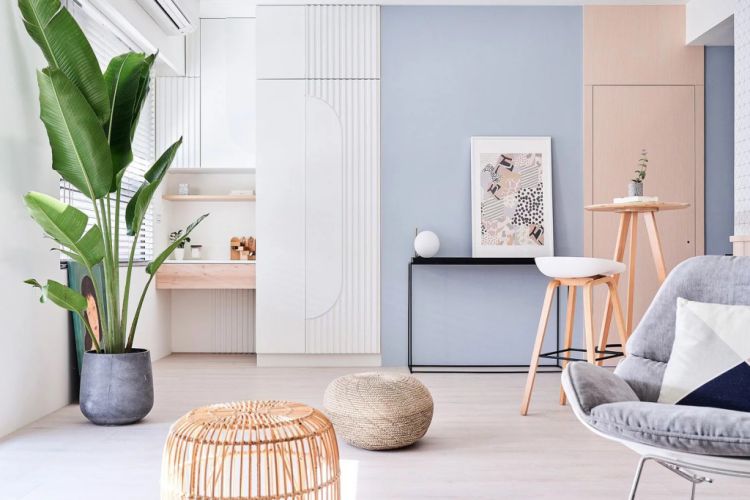Creating a minimalist interior is a design choice that emphasizes simplicity, clean lines, and a clutter-free environment. It is about making spaces feel open, calm, and purposeful without overwhelming the senses. Achieving this aesthetic involves more than just selecting the right furniture or decor; the role of color and finish plays a crucial part in setting the tone of a minimalist space. Interior painters contribute significantly by transforming walls, ceilings, and trims to enhance minimalism’s core principles. We will explore how interior painters can help bring a minimalist vision to life, emphasizing clarity, coherence, and understated elegance through skillful paint application.
How Interior Painters Enhance Minimalist Interiors
1. Creating a Neutral and Calming Palette
Minimalism often thrives on using neutral color schemes, such as whites, beiges, grays, and muted tones. Interior painters help by expertly applying these colors to maximize light reflection and spatial openness. A well-applied coat of soft white or gentle gray can make rooms appear larger and more inviting. Painters also ensure that surfaces have a smooth, even finish without visible brush marks or uneven patches, which is essential for a clean and polished look. The subtle variations in tone and texture they achieve can add depth to otherwise simple walls, enhancing the minimalist feel without cluttering the visual space.
2. Precision in Clean Lines and Edges
One of the hallmarks of minimalist design is crisp, clean lines. Interior painters pay close attention to detail around edges, corners, and trim. Sharp, well-defined edges between walls and ceilings or between two contrasting colors maintain the integrity of minimalist aesthetics. Any smudges, drips, or uneven lines could distract from the intended calm and orderliness. Painters use masking techniques and steady hands to deliver flawless transitions, reinforcing the minimalist principle of clarity and simplicity in design.
3. Choosing Matte and Low-Sheen Finishes
The choice of paint finish can dramatically affect the mood of a minimalist space. Glossy or overly reflective surfaces can add visual noise, contradicting the minimalistic approach. Interior painters often recommend and skillfully apply matte or eggshell finishes that absorb light softly, reducing glare and creating a smooth, subtle appearance. These finishes help surfaces blend seamlessly into the background, allowing furniture and architectural elements to stand out without overwhelming the senses. The painter’s expertise in applying these finishes uniformly is crucial for maintaining the understated elegance that minimalism demands.
4. Highlighting Architectural Features with Subtle Contrasts
Minimalist interiors often rely on subtle contrasts to add interest without clutter. Interior painters can use paint to emphasize architectural features like moldings, recessed walls, or built-in shelving through gentle shifts in tone or shade. By painting these elements in slightly different hues within the same color family, painters create a layered effect that adds dimension while keeping the overall look restrained. This technique requires careful color selection and precise application to enhance contrasts rather than disrupt the minimalist balance.
5. Enhancing Natural Light Through Color Choices
Natural light is a key element in minimalist design, helping to keep spaces feeling airy and fresh. Interior painters understand how certain colors interact with natural light throughout the day and use this knowledge to optimize the atmosphere of a room. Light colors can amplify daylight, while darker hues can create cozy, intimate spaces when balanced correctly. Painters also use techniques such as color toning and layering to ensure that painted surfaces respond well to light variations, maintaining harmony in the space and supporting the minimalist objective of openness and tranquility.
6. Smooth and Seamless Surface Preparation
Achieving a minimalist look is about the paint itself and the surface on which it is applied. Interior painters focus heavily on preparation work, including sanding, filling cracks or holes, and priming. A smooth, flawless wall surface is essential for a minimalist interior, where imperfections become more noticeable due to the lack of other distractions. Through meticulous preparation and application, painters create a canvas that enhances the simplicity and sophistication of minimalist design, ensuring that the final result is clean and refined.
7. Facilitating Color Consistency Across Spaces
Minimalist homes often feature interconnected spaces with a consistent color scheme that flows naturally from one area to another. Interior painters ensure that colors remain uniform across walls, ceilings, and trims in different rooms, strengthening cohesion and balance. Their attention to mixing paint batches accurately and maintaining consistent application techniques prevents color mismatches that can break the minimalist illusion. This consistency helps reinforce the overall calm and uncluttered feeling that minimalism seeks to create.
8. Supporting Sustainable and Low-VOC Paint Choices
Many individuals drawn to minimalism also prioritize sustainability and health-conscious living. Interior painters can assist by using eco-friendly, low-VOC paints that reduce harmful emissions and odors. These paints support a healthier indoor environment while aligning with minimalist values of simplicity and mindfulness. Painters knowledgeable in these options can recommend appropriate products and apply them effectively without compromising finish quality or durability.
Interior painters play a vital role in shaping and maintaining the minimalist look. From color selection and surface preparation to finish choices and precision application, their work brings subtlety and sophistication to minimalist interiors. Focusing on neutral palettes, clean lines, texture control, and light optimization helps create open, serene, and purposeful spaces. The minimalist aesthetic is not just about what is added but also about what is left out, and painters contribute by enhancing the elements that matter most while eliminating distractions.
Achieving a minimalist interior is a collaborative process where interior painters provide indispensable support. Their careful handling of colors, finishes, and surface details transforms rooms into tranquil and uncluttered environments. With a thoughtful approach to paint application, they highlight the essence of minimalist design: simplicity that invites calm and clarity. Whether refreshing a single room or designing an entire home, the role of interior painters is central to realizing the clean and elegant atmosphere that minimalism promises.

